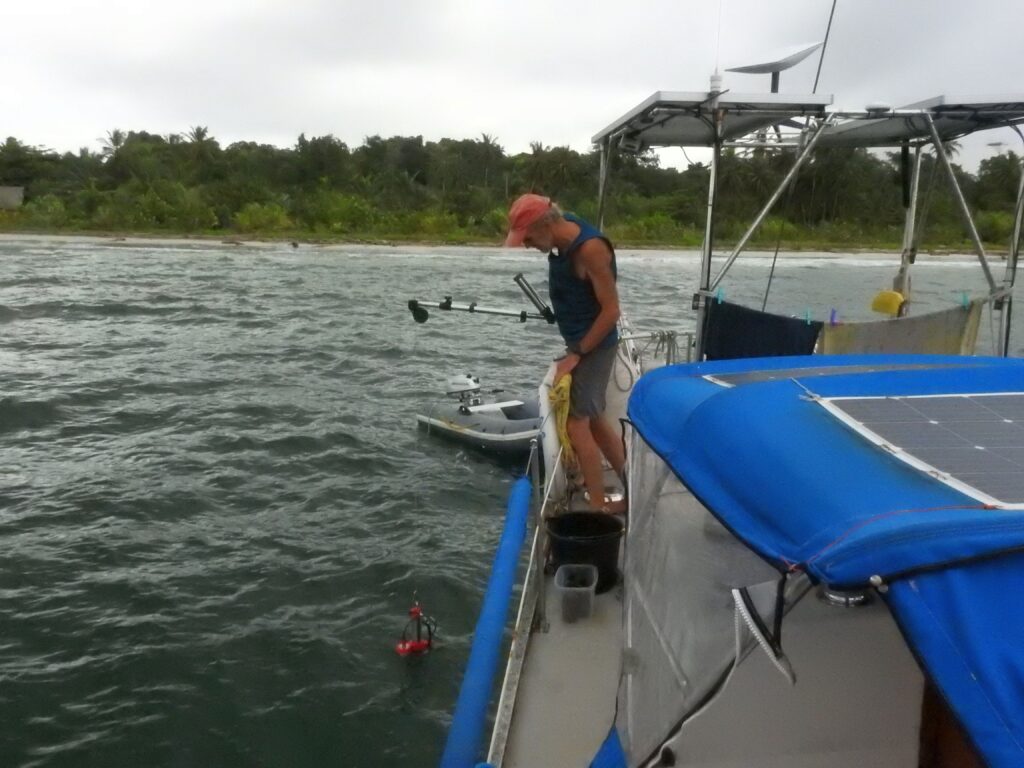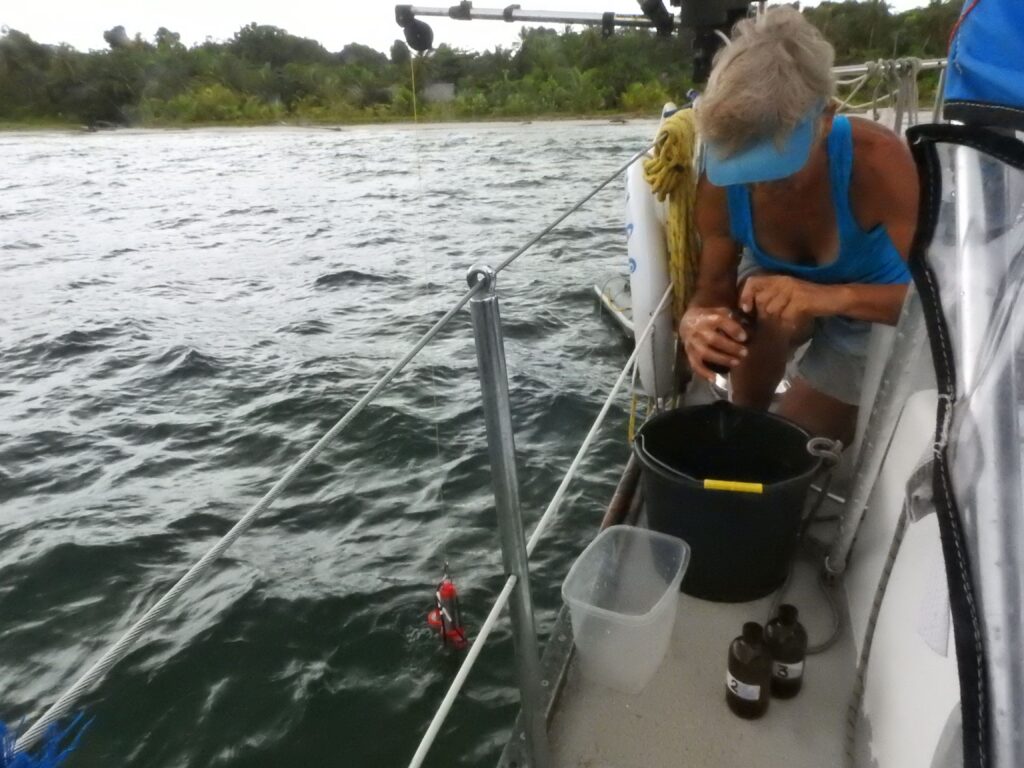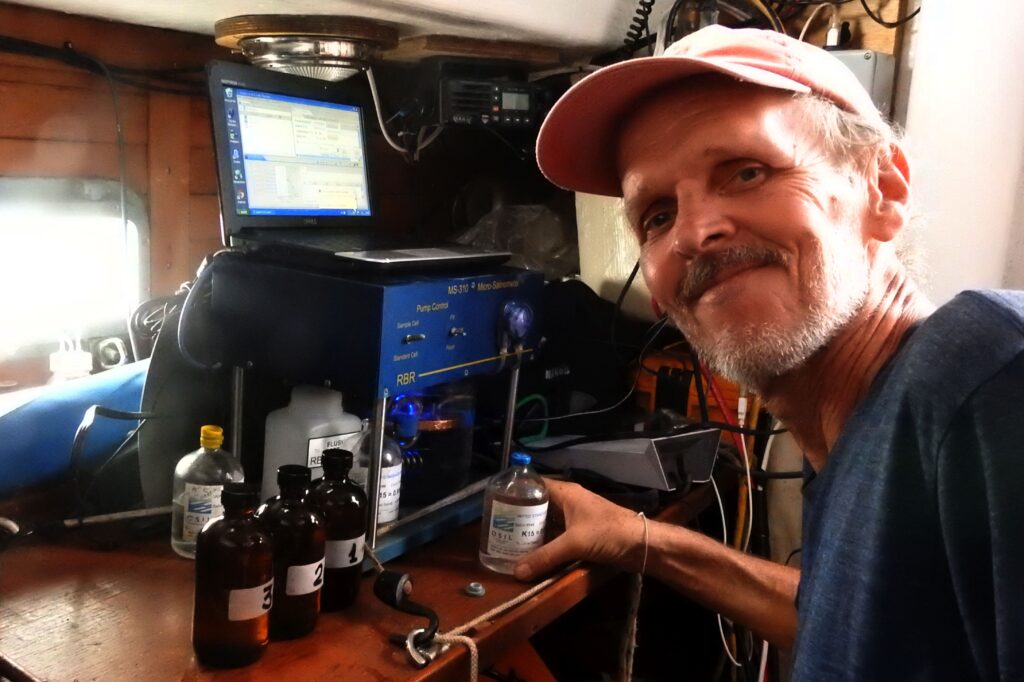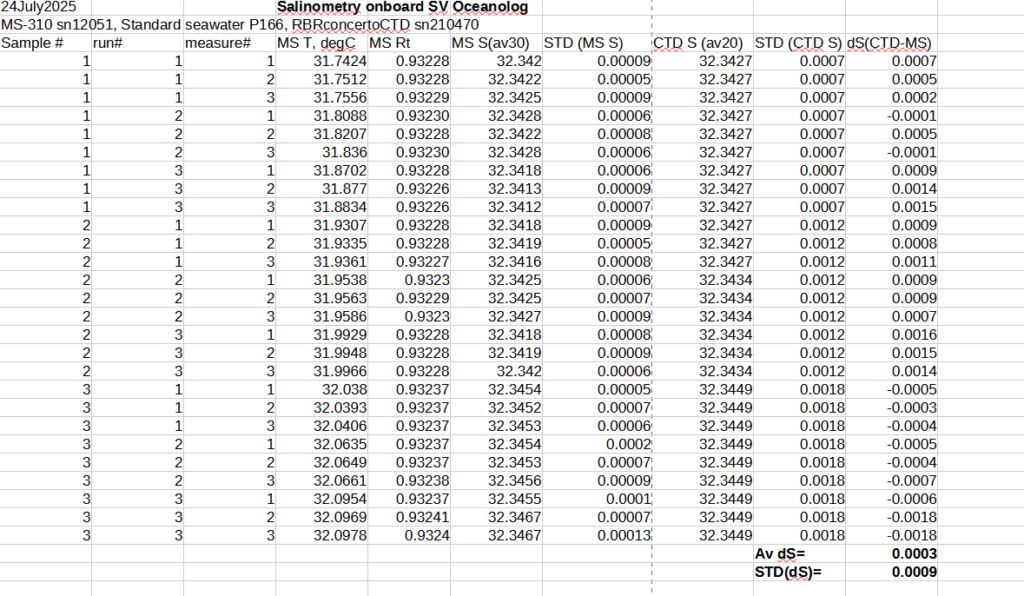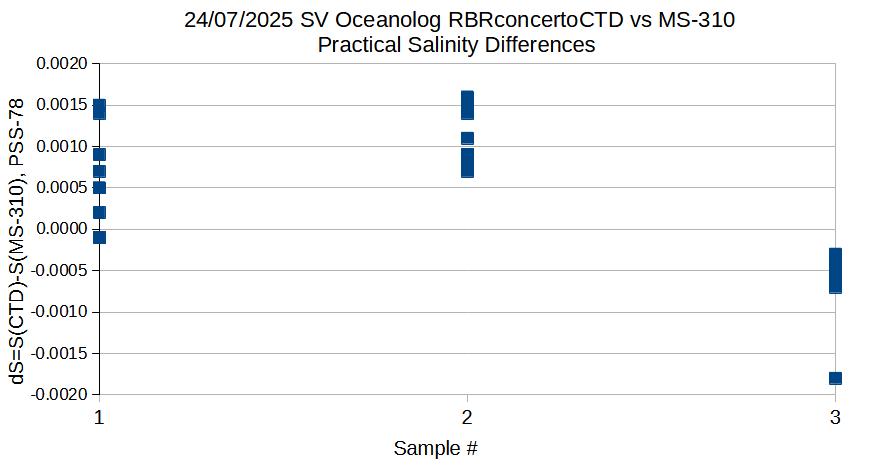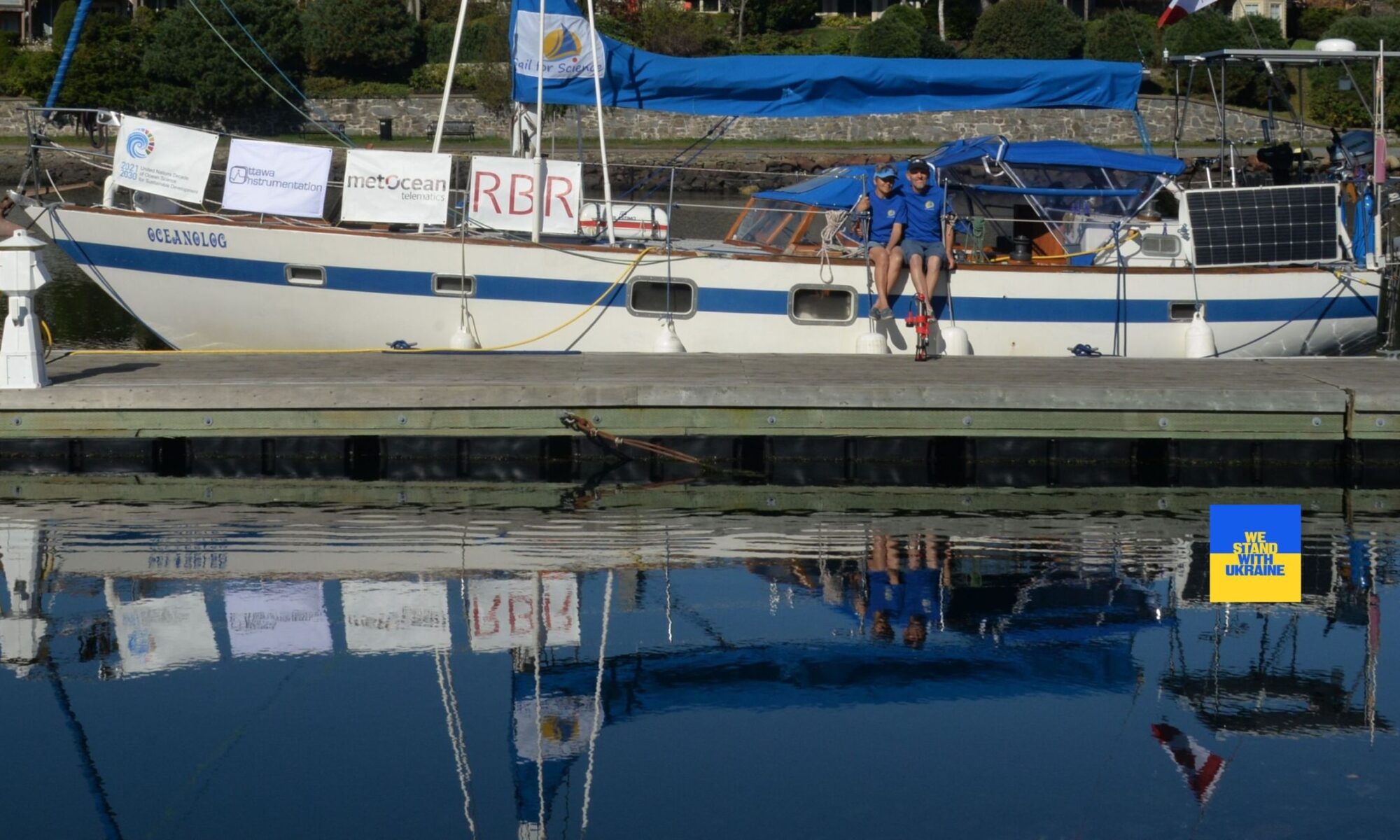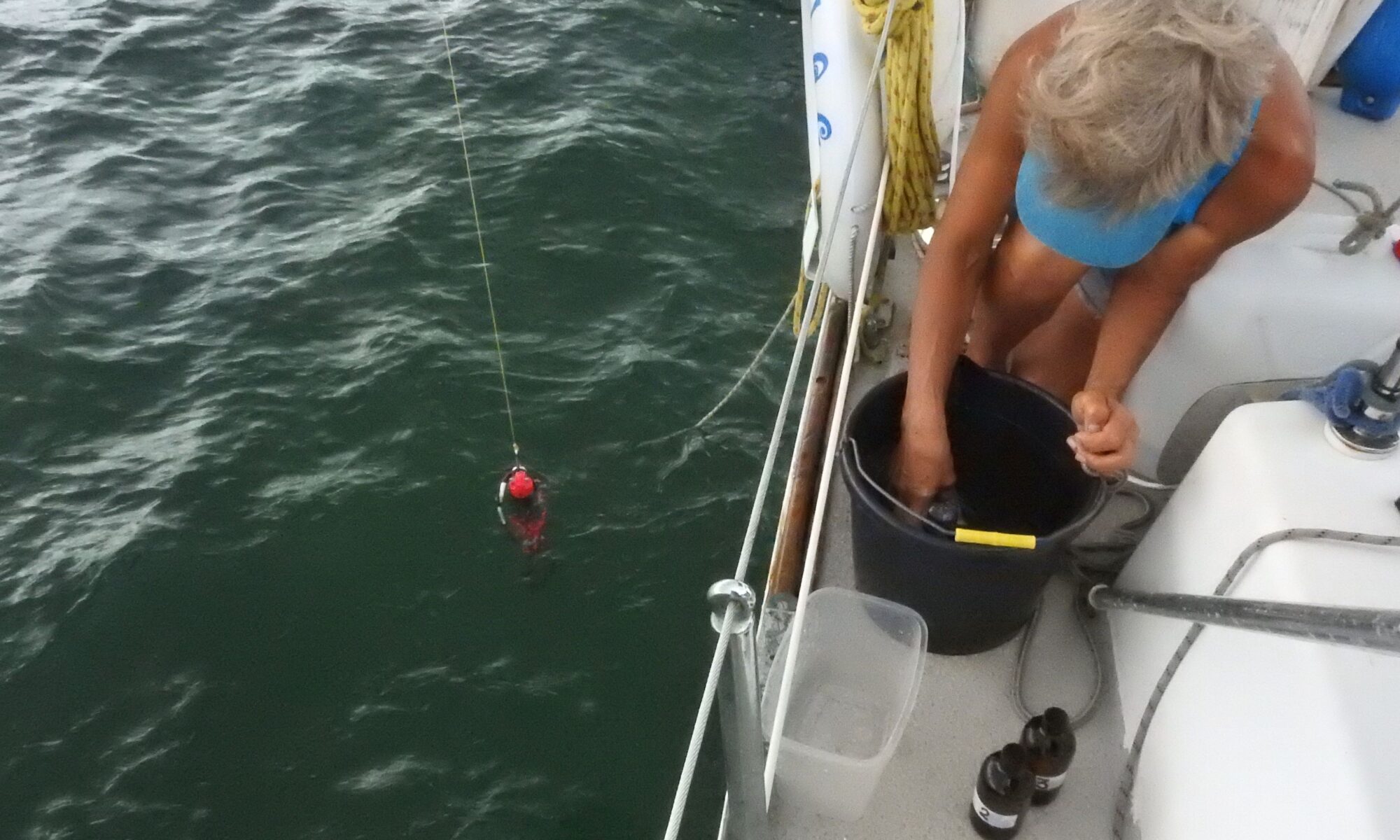Quality Control is a vital part of our CTD data collection program. The standard method for assessing the accuracy of the CTD measuring system’s practical salinity determination is salinometry—a process of collecting water samples during CTD casts and analyzing their salinity onboard using a bench-top salinometer, calibrated against IAPSO standard seawater.
This approach has been a cornerstone of oceanographic practice since CTD measuring systems first came into use. For a deeper dive into salinity determination methods, you can visit my website: www.salinometry.com.
Twenty years ago, while working at RBR, we, together with F. Johnson, developed the Micro-Salinometer MS-310, specifically designed for use on small boats or in field conditions, utilizing a 12V power supply. It uses a relative measurement method and does not require a thermostated lab.
Aboard SV Oceanolog, we carry the Micro-Salinometer MS-310, which we calibrate using IAPSO standard seawater kindly provided by Guildline through their sponsorship of our project.
As we wrapped up our Sail for Science expedition in Bocas del Toro, we collected salinity samples near Escudo de Veraguas Island, accompanied by CTD measurements. Later, we measured the salinity of three samples using the calibrated MS-310.
The comparison of practical salinity values from the RBRconcertoCTD #214070 with our salinometer readings is shown in the table below. The results indicate a CTD salinity accuracy within ±0.002, well within the accepted uncertainty of laboratory salinometry.
This demonstrates an exceptionally high level of accuracy of the RBRconcertoCTD salinity measurements after 11 months since its last calibration and 7 months of marine fieldwork.
